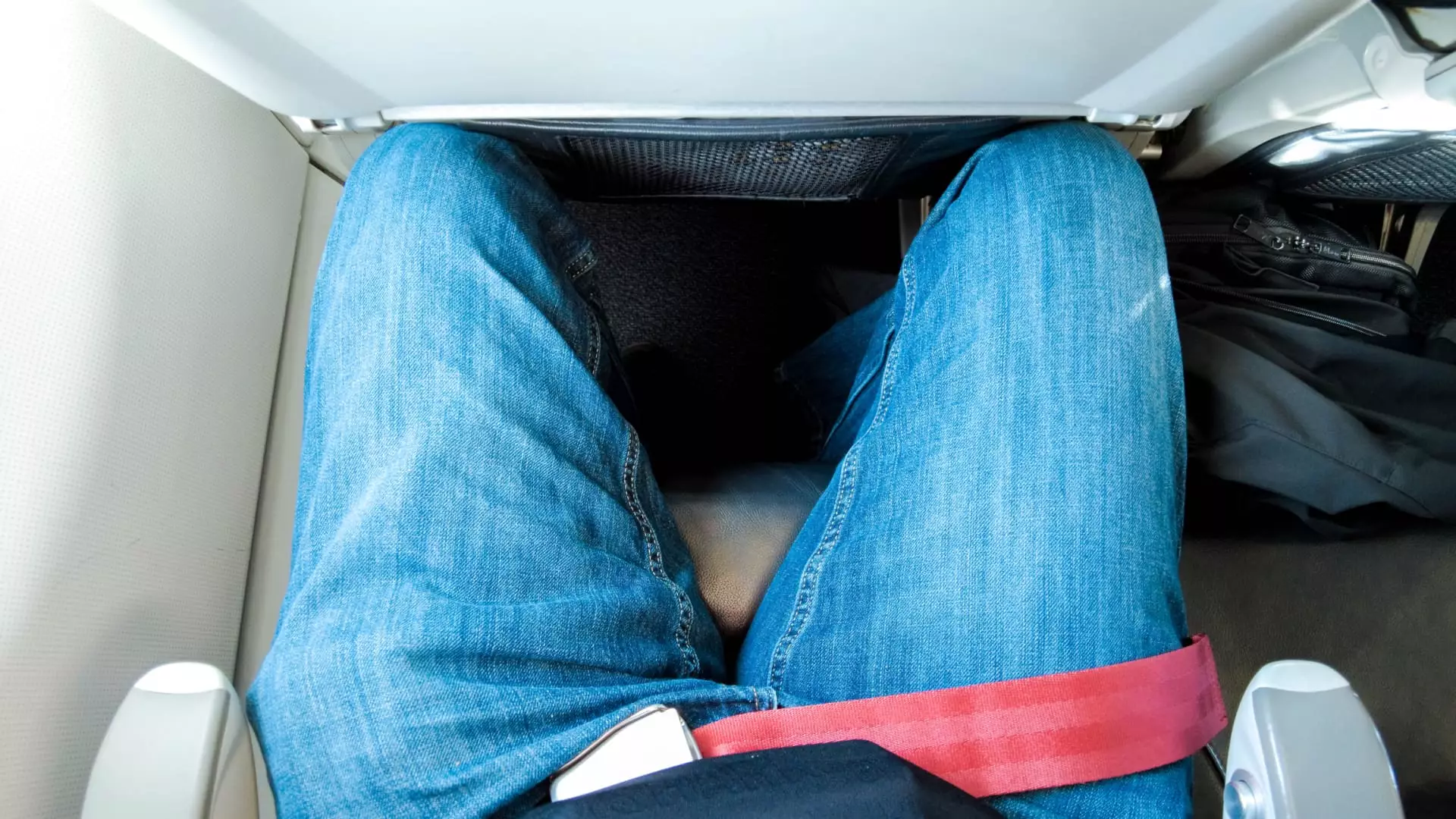In the age of modern air travel, where every inch of space matters, a recent incident aboard a Cathay Pacific flight highlighted just how contentious in-flight interactions can become. A couple found themselves banned from the airline after engaging in an altercation with a fellow passenger over the simple act of reclining a seat. This incident not only raises eyebrows about in-flight behavior but also mirrors deeper cultural rifts that exist between travelers from different backgrounds, particularly between mainland Chinese citizens and Hong Kong locals.
The event took place during a long-haul flight from Hong Kong to London, where tensions escalated over a passenger reclining her seat. The couple allegedly resorted to taunting, using offensive gestures, and physically jostling the reclined chair. A video recording of the scenario quickly surfaced on the Chinese social media platform Xiaohongshu, capturing the emotional outburst and prompting Cathay Pacific to issue a public statement. They made it clear that their zero-tolerance policy would not permit any passenger’s rights to be disrespected, nor would it allow behaviors threatening safety on board.
The woman who faced harassment during the flight recounted her plea for assistance from flight attendants, only to be met with responses that left her feeling vulnerable and unprotected. Despite her request for help, the crew allegedly suggested she compromise by adjusting her seat, signaling a lack of understanding and authority in managing the conflict. While the airline claimed that they did issue verbal warnings to the disruptive couple, the crux of the matter lies in the failure of onboard staff to intervene effectively and protect the rights of all passengers involved. This scenario raises significant questions regarding the adequacy of flight crew training in handling passenger disputes.
The video also captures the voices of surrounding passengers who condemned the couple’s actions, illustrating a growing solidarity among travelers in public spaces. Their shouts of „Show some decency!“ and „Don’t bully that little girl!“ reveal a cultural expectation of community support during disputes, revealing a palpable tension not just within the confines of the aircraft, but also reflective of broader societal norms. This individual conflict, although seemingly trivial on the surface, resonates with deeper issues of identity and cultural differences, particularly in the context of socio-political tensions between mainland China and Hong Kong.
Many comments from social media users criticized Cathay Pacific’s initial response, suggesting they should have acted sooner and more decisively. Such opinions are indicative of an underlying sentiment among mainland passengers who feel historically marginalized in Hong Kong, as well as lingering resentments following widely publicized incidents of perceived discrimination against travelers from the mainland.
Incidents like this one are far from isolated. In fact, they bring to mind past controversies involving the airline and its interactions with international travelers. A notorious incident involved the dismissal of three flight attendants who mocked a non-English speaking passenger, showcasing an ongoing struggle with sensitivity toward diverse cultures and languages within the airline industry. Social media platforms buzz with stories of discrimination, leading to a fragmented perception of hospitality from flight crews toward different ethnic groups.
The situation aboard the Cathay Pacific flight sheds light on a broader discussion about „airplane etiquette.“ The simple act of reclining one’s seat, at one time considered benign, has morphed into a controversial action that prompts polarized opinions. Supporters argue that a recline feature exists for a reason, while opponents claim it’s inconsiderate, especially in economy class. These opposing views are further complicated by the realities of shrinking seat pitches, increased passenger sizes, and the overall packed nature of modern flights.
The guidelines for acceptable behavior seem murky, dependent upon situational factors such as the time of flight, duration, and even prior permission from the passenger seated behind. What has emerged is a complex battleground of personal space where frustrations can boil over, leading to incidents like the one on the Cathay Pacific flight.
As airlines continue to navigate the delicate balance of serving diverse passenger demographics, the need for clear guidelines and training for handling disputes becomes increasingly vital. The Cathay Pacific incident serves as a reminder of the fragile nature of in-flight etiquette and the cultural nuances that accompany air travel in today’s world. Only by fostering an environment of respect and understanding can airlines hope to mend the rift that could damage not only their reputation but also the delicate fabric of passenger relations on board.


Napsat komentář